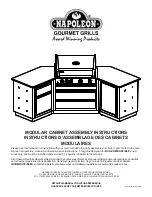
8
ENGLISH
Even with the application of the relevant safety regulations
and the implementation of safety devices, certain residual
risks can not be avoided. These include:
u
Injuries caused by touching any rotating/moving
parts.
u
Injuries caused when changing any parts, blades or
accessories.
u
Injuries caused by prolonged use of a tool. When
using any tool for prolonged periods ensure you take
regular breaks.
u
Impairment of hearing.
u
Health hazards caused by breathing dust developed
when using your tool (example:- working with wood,
especially oak, beech and MDF.)
Use
Warning!
Let the tool work at its own pace. Do not overload.
Charging the battery
The battery needs to be charged before first use and whenever
it fails to produce sufficient power on jobs that were easily
done before. When charging the battery for the first time, or
after prolonged storage, it will only accept an 80% charge.
After several charge and discharge cycles, the battery will
attain full capacity. The battery may become warm while
charging; this is normal and does not indicate a problem.
Warning!
Do not charge the battery at ambient temperatures
below 10 °C or above 40 °C. Recommended charging
temperature: approx. 24 °C.
Charger with charger receptacle (fig. C)
u
To charge the battery (5), remove it from the tool and slide
the charger receptacle (8) onto the battery.
u
Plug in the charger (7).
After normal use, a charging time of 3 hours will provide
sufficient power for most applications. However, further
charging for up to 6 hours could significantly increase the use
time, depending on the battery and charging conditions.
u
Remove the battery from the charger.
Charger with charger plug (fig. D)
u
To charge the battery, make sure that it is fitted on the
tool.
u
Insert the charger plug (10) into the connector (9).
u
Plug in the charger (7).
u
Switch on at the mains.
After normal use, a charging time of 3 hours will provide
sufficient power for most applications. However, further
charging for up to 6 hours could significantly increase the use
time, depending on the battery and charging conditions.
u
Disconnect the tool from the charger.
Warning!
Do not use the tool while it is connected to the charger.
Selecting the direction of rotation
For drilling and for tightening screws, use forward (clockwise)
rotation. For loosening screws or removing a jammed drill bit,
use reverse (counterclockwise) rotation.
u
To select forward rotation, push the forward/reverse slider
(2) to the left.
u
To select reverse rotation, push the forward/reverse slider
to the right.
u
To lock the tool, set the forward/reverse slider into the
centre position.
Selecting the operating mode or torque (fig. G)
This tool is fitted with a collar to select the operating mode and
to set the torque for tightening screws. Large screws and hard
workpiece materials require a higher torque setting than small
screws and soft workpiece materials. The collar has a wide
range of settings to suit your application.
u
For drilling in wood, metal and plastics, set the collar (3) to
the drilling position by aligning the symbol with the
marking (16).
u
For screwdriving, set the collar to the desired setting.
If you do not yet know the appropriate setting, proceed as
follows:
- Set the collar (3) to the lowest torque setting.
- Tighten the first screw.
- If the clutch ratchets before the desired result is
achieved, increase the collar setting and continue
tightening the screw. Repeat until you reach the correct
setting. Use this setting for the remaining screws.
Switching on and off
Variable speed switch
u
To switch the tool on, press the variable speed switch (1).
The tool speed depends on how far you press the switch.
u
To switch the tool off, release the variable speed switch.
Hints for optimum use
Drilling
u
Always apply a light pressure in a straight line with the drill
bit.
u
Just before the drill tip breaks through the other side of the
workpiece, decrease pressure on the tool.
u
Use a block of wood to back up workpieces that may splinter.
u
Use spade bits when drilling large diameter holes in wood.
u
Use HSS drill bits when drilling in metal.
u
Use masonry bits when drilling in soft masonry.
u
Use a lubricant when drilling metals other than cast iron
and brass.









































